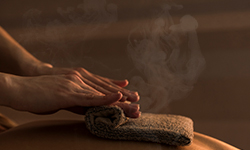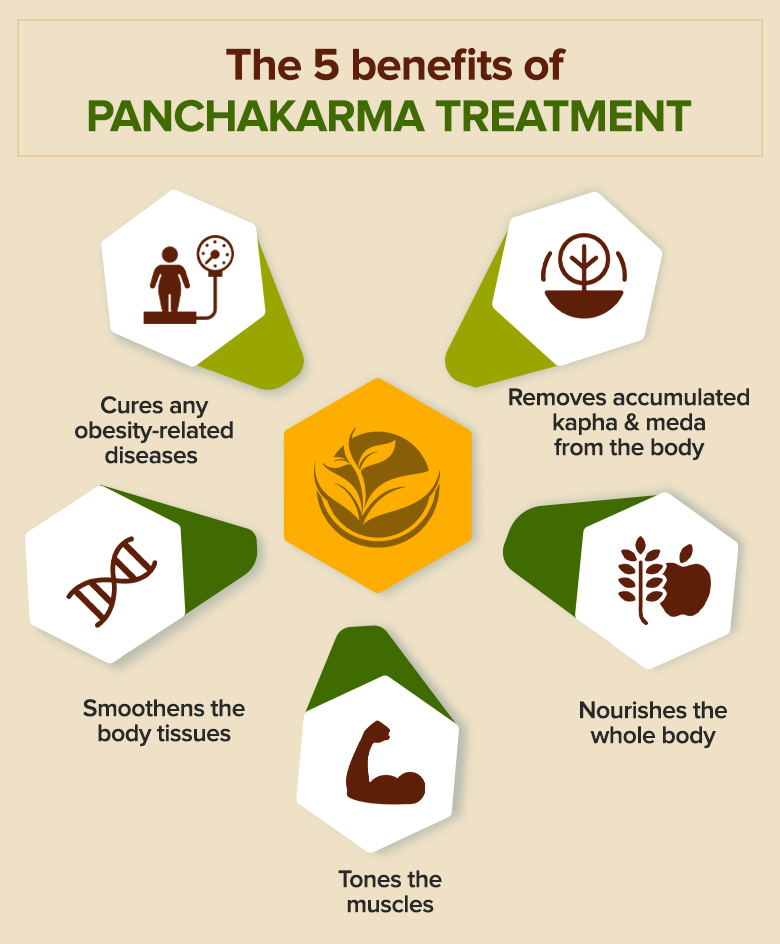
PANCHKARMA: AN AYURVEDIC WAY TO LOSE YOUR WEIGHT
Obesity, or abnormal weight gain, is a very common medical condition faced all over the world. Being obese or over weight can affect your physical and physiological health by increasing your risk of diabetes, heart problems, high blood pressure, high cholesterol, knee joint pain, lumbar pain and more. This disorder can also have an impact on your mental and psychological health, leading to anxiety or depression. Obesity has been linked to the causes of infertility as well.
If your calorie intake exceeds the number of calories burned, the excess calories get stored in the body in the form of fat. An indulgence in high-fat foods and a sedentary, inactive lifestyle are considered to be the key factors in obesity. Hence, it should be possible to manage weight with healthier food habits and physical activity. However, not everyone can overcome obesity with a diet and exercise alone. Just like in the cases of hypothyroidism, PCOS and other hormonal and metabolic disorders, it’s essential to get a medical opinion or opt for a treatment by an expert.
WHAT DOES AYURVEDA SAY ABOUT WEIGHT MANAGEMENT?
Ayurveda states that your tendency to put on weight or lose weight depends on a healthy balance between the tridosha – vata, pitta and kapha, your agni – digestive fire, and the 7 dhatu – 7 body tissues that include rasa (plasma), rakta (blood), mamsa (muscle), medas (fat), asthi (bone), majja (marrow/nerve),and shukra (reproductive tissue).
What are the tridosha?
According to Ayurveda, every person is born with a particular Prakruti which is the body’s natural state of being. This is determined by the three energies or doshas – vata, pitta and kapha. Your prakruti depends on the dominant dosha, which could be one or two out of the three doshas. Some rare people are tridoshic – they will have an equal leaning towards all three doshas. Changes in your lifestyle and environment can cause an imbalance in the three doshas, leading to the origin of diseases or disorders.
If you’d like to identify your original tridosha balance and get an idea of your acquired state of imbalance, take our 10-minute Prakruti questionnaire here.
Ayurveda, as a holistic life science, takes into consideration your physiological, psychological, environmental and lifestyle aspects.
Obesity is one of the oldest documented disorders. In Ayurveda, it is described as Medoroga – excess formation or accumulation of meda dhatu. It is called Santarpanjanya Vyadhi, an anabolic disorder where the metabolic biochemical processes are affected.
Our body has 13 types of agni (digestive fire). Jatharagni is the main agni dealing with primary digestion in the gut. The other types of agni play a role in the formation of respective dhatus (body tissues).
An imbalance in vata and kapha, and a disturbed medha dhatu agni is responsible for formation and accumulation of excess meda dhatu/ fatty tissue from food. Hence, people dealing with obesity may find it harder to lose weight as well as maintain their weight loss for longer periods.
PANCHAKARMA TREATMENT FOR SUSTAINED WEIGHT LOSS
Ayurveda not only focuses on weight loss, but also corrects imbalances in vata, kapha, and meda dhatu agni to give you longer, sustained weight loss.
Panchakarma plays a vital role in the management of obesity as it helps eliminate excess kapha and meda in the body, corrects agni at the dhatu level, and also clears all the channels in the body.
THE 5 PROCEDURES OF PANCHAKARMA THERAPY
The Panchakarma module consists of the following detoxifying procedures:-
1: Vamana

Vamana means therapeutic vomiting or medicated emesis. This procedure helps expel excess kapha dosha orally from the body, and eliminate accumulated toxins from the respiratory and gastrointestinal tract.
2: Virechana

Virechana is therapeutic evacuation of the bowels or medicated purgation. This procedure helps purify the blood, clear excess pitta and remove accumulated toxins from the liver, gall bladder and gastrointestinal tract through the rectum. It is usually administered for around 3 days, although the duration may vary.
3: Basti

Basti involves medicated oils and ghee given as an enema. It cleanses the accumulated vata, pitta and kapha toxins from the colon, thus settling all three doshas. A basti decoction with triphala, dashamula, rasna and eranda is found to be especially effective for obesity. Depending upon the person’s body type and obesity level, basti karma is administered for 8- 15 days.
4: Abhyanga

Abhyanga is a daily body massage using Ayurvedic oils. Oils with heating properties like sahacharadi, manjishthadi or karpasastyadi tailam help to liquefy meda dhatu. Udvartana involves massaging the body with herbal powders like triphala. Massaging improves circulation and helps facilitate the release of accumulated toxins from the body.
5: Swedana

Swedana is a steam fomentation given after the oil massage. The procedure induces sweat to expel toxins from the body, opens up the blockages in the srotasa (channels), and also kindles all the dhatu fires.
THE 5 BENEFITS OF PANCHAKARMA TREATMENT

The kind of panchakarma treatment required depends on the reasons behind your weight gain. You can talk to a certified Ayurvedic Vaidya to understand the treatment in detail and its desired outcome.
Our team at Mi.Bo.So, consisting of Ayurvedic vaidyas, nutritionists and yoga coaches, will be happy to guide you in your weight management journey. We’ll help you with a customised weight loss Ayurvedic treatment and therapy, which will be supplemented with a proper diet plan, exercise routine, and sleep schedule. By correcting the underlying cause of imbalances in your body, you’ll be able to gauge the difference in your overall health, vitality and physical fitness yourself.
If you have any queries, feel free to leave a comment below and we’ll get back to you!





0 Comment
No comments found.Thank you. Your comment will be visible after an approval.
Add your comment